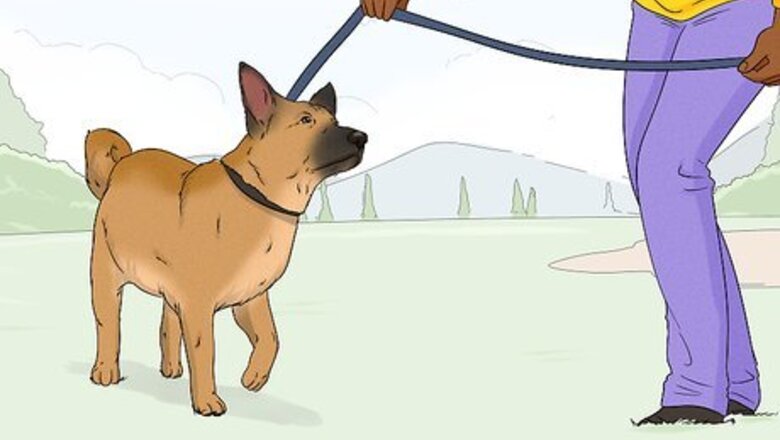
views
Spot Cleaning Your Dog’s Fur
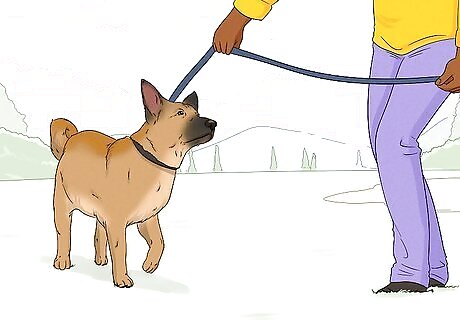
Move your dog to a comfortable area where they can stay calm. Grooming can be a very scary experience for your furry family member, especially if you’re cleaning a sensitive area. Professional dog groomer Terryl Daluz recommends giving your dog a lot of praise and yummy treats as you move them to the bathroom so they have a positive experience while they’re being groomed and cleaned. Spot-cleaning means you’ll just wash the affected area rather than giving your dog a complete bath. It works best if your dog rolled in dried poop or has it stuck to the fur around their bum. If your dog is really messy, like from having diarrhea for example, it’s probably best to give them a full bath. You may be able to brush out some of the poop before washing your dog. If there are large pieces that may make a mess in your house, take your dog outside and use a pet brush to loosen and remove as much as possible.
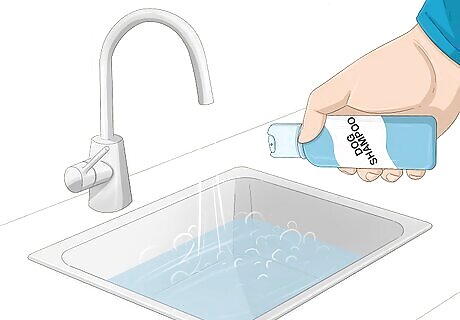
Fill your sink with lukewarm water and dog shampoo. Since you’re just spot cleaning the dirty fur, you don’t have to worry about running the bathtub. Fill your sink with some lukewarm water and mix in a pea-sized amount of pet-friendly shampoo. Stir the water into a soapy solution, then dip a clean wash rag or paper towel into the mixture. Lukewarm water will help your dog stay as comfortable as possible while you clean them off.
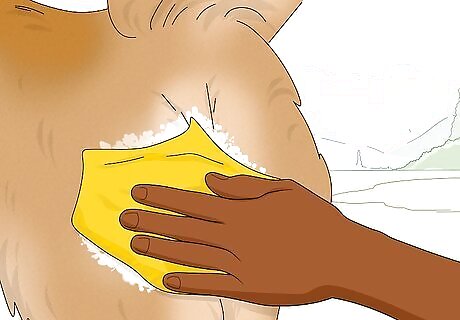
Gently scrub the fur with the soapy rag. Lift your pet’s tail and wipe down the area around your dog’s bum using gentle, firm motions. As an extra precaution, clean the fur directly beneath your dog’s tail, as well. If the poop is somewhere other than your dog’s bum, apply the same method to the affected area. For example, if it’s on their belly, gently scrub the fur until it’s clean. You may want to wear disposable gloves when you do this, as dog poop carries bacteria. Don’t be discouraged if you don’t make any progress at first—the waste may not come off right away if it’s dried on. You can also use pet-friendly wipes if you don’t have any pet shampoo.
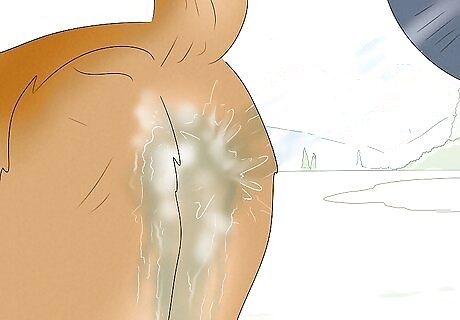
Rinse and dry your dog’s fur. Pour a small amount of lukewarm water over the area you’ve just shampooed. Rinse away all of the leftover soap, then grab a soft, dry towel and soak up any leftover water. Keep patting the fur until it is totally dry.
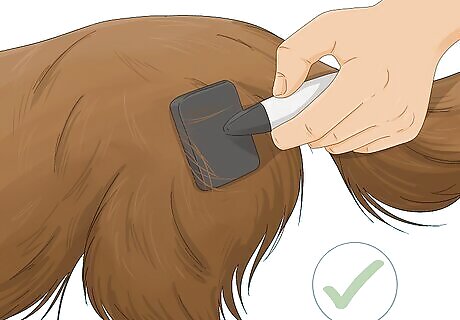
Comb the fur around your dog’s butt. Once your dog’s fur is dry, gently comb the affected area to remove any fine particles that may remain. Combing also helps detangle any mats that trap fecal matter, dirt, and other debris.

Trim the fur of the affected area. If necessary, use pet clippers to cut out any soiled fur that remains. Be extremely careful so you don’t accidentally cut your dog’s skin. Keeping this area trimmed short can prevent this from becoming a regular issue. If you’re not comfortable trimming your dog’s fur, take them to a professional groomer instead.
Bathing Your Dog
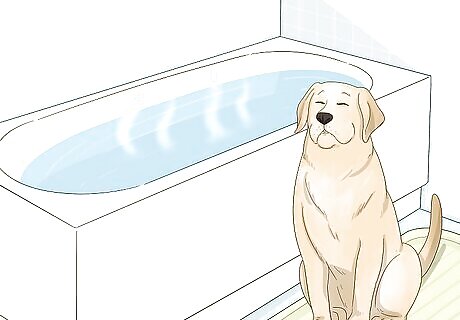
Fill a bathtub or basin with warm water. If your dog had diarrhea or is otherwise very messy, giving them a bath is probably the best option. Fill the tub with lukewarm water and make sure to have a non-slip mat so your dog doesn’t fall or get hurt. If it’s a warm day and you don’t want to bring the mess inside, you can also wash your dog in a basin outside. If you have a small breed, you may be able to bathe them in a sink, as well. If your dog doesn’t like baths, have some treats and toys on hand to help keep them calm. If you’re washing your dog in a bathtub, check that the drain is unplugged so the tub doesn’t fill up. Daluz says you can also take your dog to a professional groomer and get them cleaned.
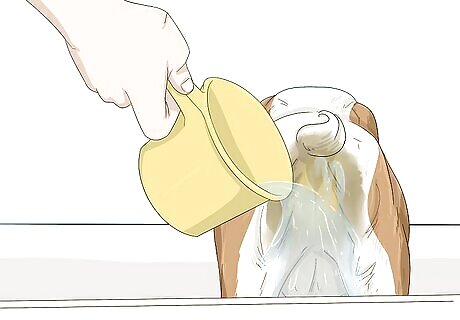
Pour some warm water over your dog’s fur to get it wet. Once your dog is safely in the tub, soak their fur, paying special attention to their butt or the affected area. This will make it easier to work the shampoo into your pet’s fur.
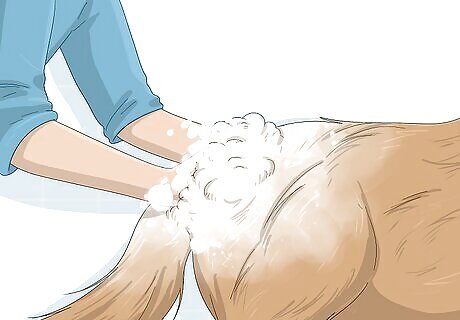
Massage dog shampoo into your pet’s fur. Now that your dog is nice and wet, lather your hands with pet-friendly shampoo and work the product into your pooch’s fur from the neck down. Focus especially on the soiled areas, gently coaxing away any waste that’s gotten stuck in your pet’s fur. You may want to wear gloves as you do this. Try not to get any shampoo in your dog’s mouth, eyes, or ears, since these spots are really sensitive.
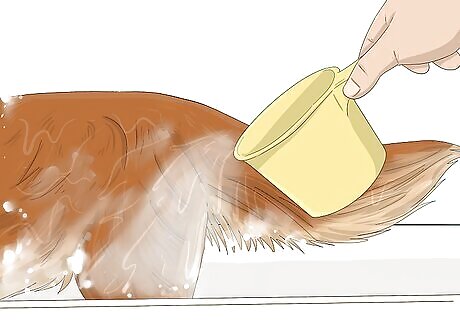
Carefully rinse your dog with warm water. Pour clean, warm water over your dog’s fur to remove any remaining shampoo. Go over all of the sudsy spots carefully so their coat is completely clean. If you’re bathing your dog in the tub, you can get clean water from the tap. If you’re washing them outdoors, you may want to keep a separate bucket of clean water for rinsing. Warm water helps your dog stay happy and comfortable during the bath. Cold water, on the other hand, will feel really uncomfortable for your pet.
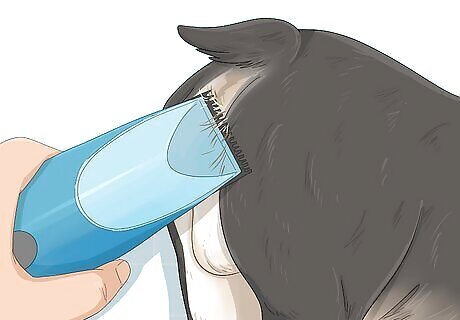
Trim any soiled fur around your pet’s bottom. Grab a pair of pet clippers and snip away any fur that has fecal matter stuck to it. Be really careful when you do this—the skin here is super sensitive, so you don’t want to make your dog uncomfortable or accidentally cut their skin. If you don’t feel comfortable clipping your dog’s fur on your own, call a vet or a grooming professional for help.
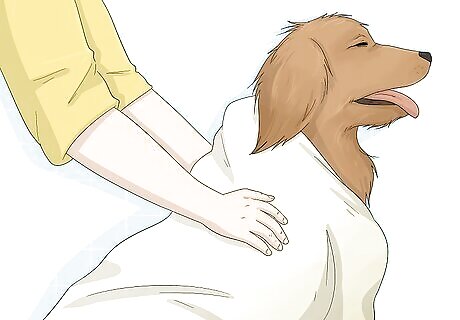
Dry off the fur with a towel. Take a clean towel and blot away any dripping water from your pet. Your pooch will be able to air-dry once they’ve been toweled down—plus, dogs love to shake themselves dry on their own.
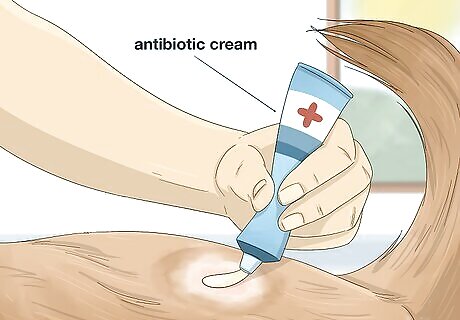
Apply an antibiotic cream (optional). If you notice the skin around your dog’s butt is particularly irritated, you may consider applying a light coat of triple antibiotic ointment or A&D to help the area heal. Avoid using diaper rash ointments or anything containing zinc oxide, as these can be extremely harmful if ingested. If you’re not sure if a product is safe for your dog, consult with your vet before using it.
Preventing Poop from Getting Stuck
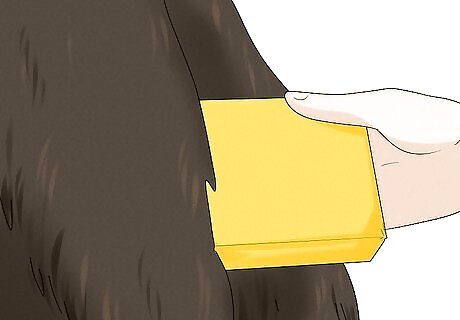
Wipe away fresh poop as soon as you notice it. Pet waste becomes a bigger issue if it builds up over time. Each time your dog relieves itself, check to see if any waste is smeared over its fur. If there is a small mess, wipe it off with pet or baby wipes right away. It may help to carry these wipes with you when you take your dog for a walk. Similarly, always clean up after your dog when it relieves itself. By properly disposing of the poop, your dog won’t have a chance to roll in it and get messy. If you don’t regularly check your dog for matted feces, it could lead to a medical condition called pseudocoprostasis, which refers to a pet’s fur being so matted with feces that it blocks the anus. The fur can become so matted that it becomes difficult for the dog to defecate, which in turn can cause additional health problems.
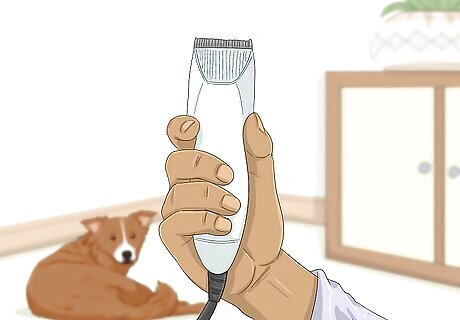
Keep your dog’s bottom trimmed and bathe them monthly. Either groom your dog yourself or schedule regular grooming appointments to keep your pup clean and unmatted. If you go to a professional groomer, request to have the hair around your dog’s anus trimmed or shaved for better hygiene.
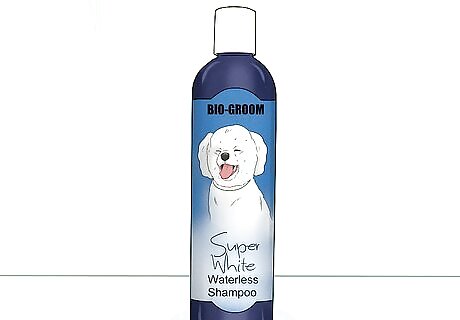
Apply waterless shampoo to prevent poo from sticking. Pick up a bottle of waterless shampoo from your local pet supply store, then spray it over the fur around your dog’s behind. Rub it into the fur and under the coat so it reaches the skin. Let it sit for a few minutes then brush it out and towel off your dog. This product helps keep your dog clean between baths and prevents matting, so it also helps keep poo from sticking to their fur. This is a great product to use before taking your dog out for a walk. Use it in the weeks and months where your furry friend isn’t getting a bath.
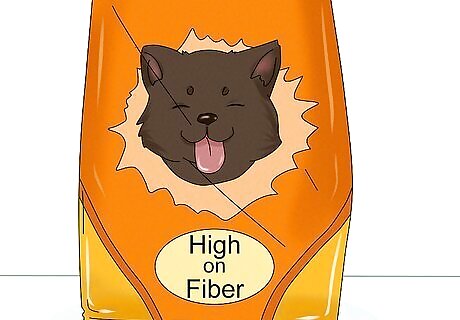
Feed your dog plenty of high-fiber foods. Wet, runnier poops may be a sign that your pooch isn’t getting enough fiber in their diet. Talk to your vet and see if they have any ideas on how to improve your furry friend’s diet.
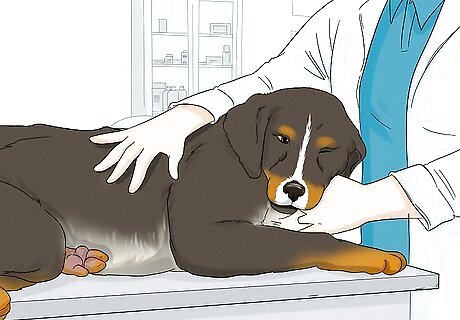
Visit the vet to see if your dog has a medical issue. Unfortunately, messy poops may occur for different reasons, like an infection or parasite. Schedule an appointment with your vet to take a look at your pooch so you can get a better idea of what the problem is. Your vet can give specific suggestions or medications that may help your dog in the long run.
Why Your Dog May Need Help Bathing
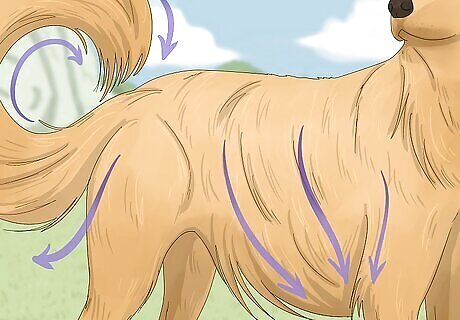
Help clean a dog’s bum if it’s elderly, has diarrhea, or has long fur. In most cases, dogs do a good job of keeping their bums relatively clean. While most dogs with a healthy diet won’t need additional help to clean their nether regions, there are circumstances where you might need to step in. Here are some common reasons a dog may have difficulty cleaning themselves: They’re a non-shedding breed with long, tangled fur. They’re overweight and have difficulty reaching the area. They have diarrhea and/or have a parasite, bacteria, or virus that makes it difficult for them to control their bowels. They have plugged anal sacs, which are 2 small glands that are normally emptied when the dog relieves itself. They’re elderly and/or have joint problems or stiffness that prevents them from reaching the area.


















Comments
0 comment